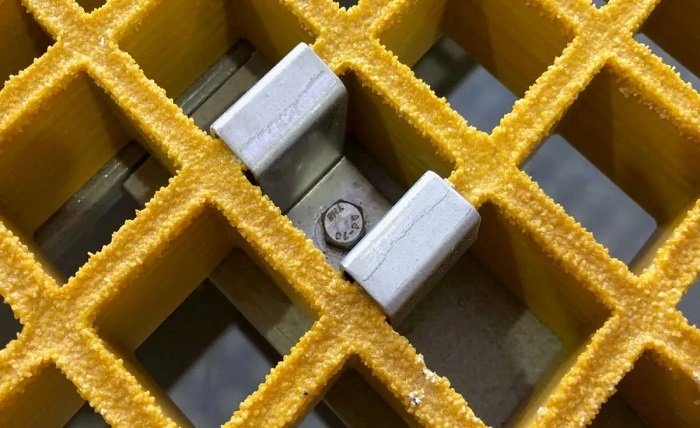Introduction
In industries across Australia, FRP grating has become the go-to solution for applications requiring materials that are durable, corrosion-resistant, and easy to maintain. Made from Fiber Reinforced Polymer, this composite material has proven to be a reliable choice for demanding environments where traditional materials fall short. In this article, we’ll explore the unique qualities of FRP grating, its advantages over conventional options, and why it’s perfectly suited to support industrial projects in various sectors.
What is FRP Grating and How Does it Work?
The Composition and Design of FRP Grating
FRP grating is composed of high-strength fibers embedded in a polymer matrix, forming a material that is highly resistant to corrosion, non-conductive, and incredibly durable. This unique construction makes FRP grating ideal for industrial applications where exposure to chemicals, salt, and moisture would typically degrade traditional materials. Unlike metals that can rust or wood that requires chemical treatments, FRP grating maintains its integrity without needing special coatings, making it a safer, long-term solution for high-traffic areas.
FRP Grating vs. Traditional Grating Materials
Compared to traditional grating materials like steel and aluminum, FRP grating offers several key advantages. Steel grating is known for its strength but requires regular maintenance to prevent rust and corrosion, especially in moisture-prone or chemical environments. Aluminum, though lightweight, lacks the durability and strength needed for heavy-duty applications. FRP grating, by contrast, combines strength and corrosion resistance with a lightweight profile, making it easier and safer to install and move. Industries looking for a cost-effective, low-maintenance option will find FRP grating an ideal alternative to metal grating in terms of durability and performance. For more details, see this comprehensive guide on industrial grating materials.
Key Benefits of FRP Grating for Industrial Applications
High Strength, Lightweight, and Easy to Install
One of the standout features of FRP grating is its high strength-to-weight ratio, which combines durability with ease of installation. Weighing less than steel or aluminum, FRP grating is easier to transport and position, especially in elevated or restricted areas where heavy materials can pose installation challenges. This lightweight nature also makes FRP grating safer to handle, as it reduces the risk of injuries during transport and installation.
Non-Corrosive and Low Maintenance
FRP grating’s ability to withstand corrosive environments without degrading is a major advantage in industrial settings, particularly in sectors that encounter frequent exposure to moisture, salt, or chemicals. In contrast to steel, which requires periodic maintenance to prevent rust, or wood, which can rot and deteriorate, FRP grating stays intact with minimal upkeep. This non-corrosive property saves companies on maintenance costs over time and reduces the need for downtime, making FRP grating a practical, cost-effective choice for industries seeking low-maintenance solutions.
Applications of FRP Grating in Australian Industries
Common Industries Utilizing FRP Grating
FRP grating has become popular in various Australian industries, including oil and gas, water treatment, chemical processing, and general manufacturing. In oil and gas facilities, FRP grating provides a slip-resistant, corrosion-proof surface ideal for walkways and platforms. Water treatment facilities use FRP grating for its resistance to moisture and chemicals, ensuring long-lasting safety and reliability in wet environments. Chemical processing plants also benefit from FRP’s non-corrosive nature, which protects grating from harsh chemicals while enhancing worker safety with its slip-resistant surface. With its versatile applications, FRP grating is an adaptable solution that meets the demands of numerous industrial sectors.
Case Studies of Successful FRP Grating Installations
Numerous projects across Australia highlight the success of FRP grating in real-world industrial applications. For instance, a water treatment plant in Queensland recently installed FRP grating along walkways and elevated platforms, noting significant reductions in maintenance and replacements. The FRP grating’s ability to withstand continuous exposure to chemicals and moisture while maintaining a safe, non-slip surface proved essential for the plant’s operations. Similarly, an oil refinery in Western Australia installed FRP grating to enhance safety in high-traffic areas where traditional grating materials quickly deteriorated. These case studies underscore the effectiveness and reliability of FRP grating in high-demand, high-exposure environments.
The Future of FRP Grating in Industrial Settings
Sustainable and Eco-Friendly Benefits of FRP
As sustainability takes center stage in industrial planning, FRP grating stands out as a material that supports eco-friendly practices. With a longer lifespan than traditional materials, FRP grating reduces waste through fewer replacements. Additionally, since FRP does not leach harmful chemicals into the environment, it’s an environmentally safe choice for projects that prioritize ecological impact. In an industry that increasingly values sustainable building practices, FRP grating provides a practical solution that aligns with modern environmental standards.
Meeting Future Demand for Safer, More Resilient Materials
Australia’s industrial sector is witnessing a shift toward safer, more resilient materials, and FRP grating meets this demand with features that enhance both safety and durability. The grating’s slip-resistant, non-conductive surface ensures a safer environment for workers, especially in chemical processing or electrical settings. As industries seek materials that reduce workplace hazards while withstanding harsh conditions, FRP grating is likely to become an even more prominent choice in industrial infrastructure projects.
Conclusion
FRP grating has established itself as a top choice for industrial applications across Australia, offering unmatched durability, corrosion resistance, and ease of maintenance. Whether for oil and gas platforms, water treatment facilities, or manufacturing plants, FRP grating provides a versatile, safe, and cost-effective solution that outperforms traditional materials. As the demand for sustainable, high-performance materials grows, FRP grating remains a forward-thinking option that supports long-term resilience and operational efficiency.
Frequently Asked Questions (FAQs)
Q1: What makes FRP grating safer than steel grating? A1: FRP grating is non-conductive, slip-resistant, and highly resistant to corrosion, making it safer for environments where electrical hazards, moisture, or chemicals are present.
Q2: Does FRP grating require frequent maintenance? A2: No, FRP grating is designed to be low-maintenance. Its resistance to corrosion and wear significantly reduces the need for regular upkeep, which can save time and money in the long run.
Q3: Can FRP grating withstand chemical exposure? A3: Yes, FRP grating is highly resistant to a range of chemicals, making it ideal for applications in chemical processing, water treatment, and other environments where chemical exposure is common.
Q4: How does FRP grating support sustainability in industrial applications? A4: FRP grating’s long lifespan and low replacement needs reduce material waste, and since it doesn’t release harmful substances, it’s considered environmentally safe, supporting green industrial practices.













